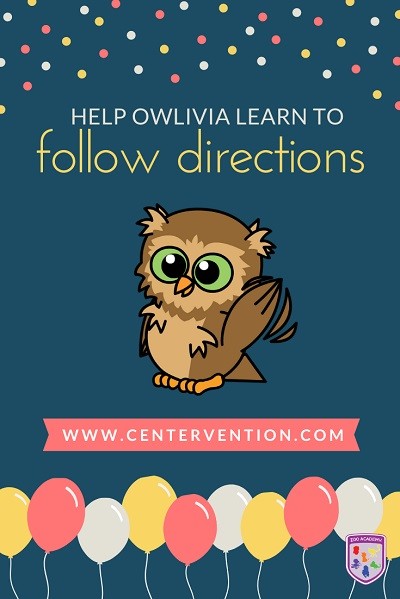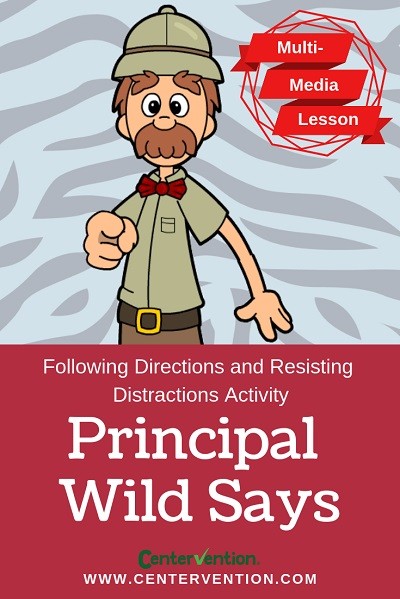Learning to follow directions is an important skill for all students to master, and by the time students start Kindergarten, they should be able to handle simple 2 to 3 step instructions. Still, the school environment is a busy and exciting one, and even older students can benefit from activities that support listening to, and complying with, instructions. To help, we assembled several following directions worksheets.
Following Directions Worksheets
This fun pack is themed on characters from Zoo Academy and Zoo U and provides three following directions worksheets that challenge students to listen or read carefully and to closely follow directions in order to complete a task. In order of increasing difficulty:
Owlivia and the Balloons (worksheet): Students will help Owlivia with a coloring project as Miss Castillo asks her to color the biggest balloon blue, the smallest balloon yellow, and the medium balloon red.
On the Playground (worksheet): Just after recess, Ms. Bergstein has asked Owlivia to help put away many toys and tools around the playground.
Joke’s on Zoo U (worksheet): In this logic puzzle for older students, players must use clues to crack a secret code that reveals the answer to a silly joke. Whether you choose to read the prompts and clues out loud to students, or have them work independently, they will enjoy the fun of interacting with the game characters while tuning in their attention.

Following Directions Activity
The second following directions lesson is a twist on the classic game Simon Says. Students will follow “Principal Wild’s” instructions to make different movements with their body, such as hopping on one foot or hands on their head, only moving when the instruction is preceded by “Principal Wild says…”
To challenge their Impulse Control Skills, a few students will act as distractors, trying to engage students in conversation while the instructions are happening. Students will need to focus intently on the instructions and ignore the distractions to know when and when not to move.
Recommended Grade Level: Upper Elementary and Middle School
SEL Skill(s): Impulse Control, Communication
Duration: 30 minutes
Materials: Educator lesson guide

Following Directions Activity Directions
Talk with your students about it is important for everyone to pay attention and follow directions and by not being a distractor to classmates.
Discussion questions will include:
- Have you ever missed something important in class, like directions, because a classmate was talking to you? If someone is talking to you or distracting you in some other way, and you miss something, is it your fault or theirs?
- Do you think you’ve ever been a “distractor” during class? How do you think the other students felt when you were talking while the teacher was talking?
Even if someone is purposely trying to distract you or make you break the rules, your behavior and how you respond is always your choice. A classmate can make it difficult, but they can’t force you to not pay attention or not follow directions.
Additional Resources
Books
- Me and My Feelings by Vanessa Green Allen
- Following Directions: The Fun and Easy Way by Dr. Erica Warren
- What Should Danny Do? by Adir Levy
- What Were You Thinking? by Bryan Smith
Related Lessons and Programs
- Following Directions at Home
- Stories in Motion (for Students with Autism)